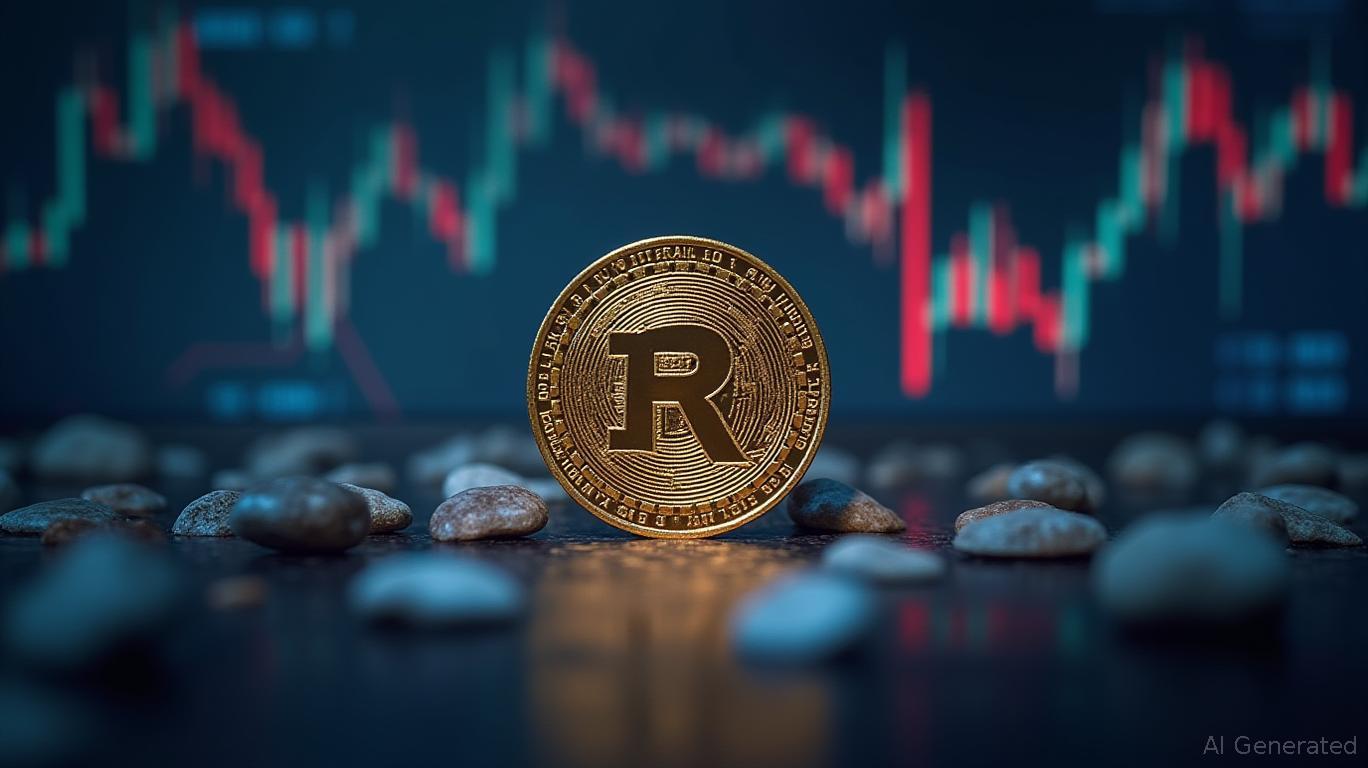Global investors are drawn to South Africa's attractive high returns, even as they weigh the associated risks
- South Africa's inflation-linked bonds attract global investors, reflecting confidence in high-yield opportunities despite economic challenges. - Coca-Cola HBC's $3.4B acquisition of CCBA highlights Africa's growing appeal, though raises concerns over local ownership and job security. - The Reserve Bank warns of competitiveness risks from Trump's tariffs, urging structural reforms and trade diversification to sustain investor trust. - A $100M plan to revive Formula 1 racing aims to boost economic visibili
South African government bonds have become increasingly attractive to international investors, as demonstrated by the recent sale of 1 billion rand ($57.76 million) in inflation-linked securities. This auction, featuring bonds maturing in 2033, 2046, and 2050, signals strong investor faith in South Africa’s fiscal management, even as the country faces broader economic headwinds. The trend mirrors a wider movement of foreign capital into South Africa, fueled by the nation’s comparatively higher yields when set against the more cautious markets of Europe and North America.
This growing interest is part of South Africa’s broader economic evolution. Notable deals, such as Swiss-based Coca-Cola HBC’s $3.4 billion purchase of Coca-Cola Beverages Africa (CCBA), illustrate the continent’s rising appeal to global corporations, according to

In light of these changes, the South African Reserve Bank has stressed the importance of structural reforms to maintain investor confidence, especially after U.S. President Donald Trump imposed 30% tariffs on South African exports—the highest in sub-Saharan Africa. The central bank cautioned that, without greater diversification and productivity improvements, South Africa could lose its edge in global supply chains, particularly in the automotive and agricultural industries. However, the bank also pointed out that advancing the African Continental Free Trade Area agreement could help strengthen trade resilience.
The government is also launching major initiatives to boost economic growth. Among them is a $100 million campaign to bring Formula 1 racing back to South Africa, with Minister Gayton McKenzie seeking backing from six companies to sponsor races over a three-year period. Although the project faces significant logistical and financial obstacles, it is part of a broader effort to use international events to enhance economic visibility, similar to the strategy behind the 2010 FIFA World Cup.
Nonetheless, obstacles persist. The recent bond sale, while a success, comes amid tight fiscal conditions and a debt-to-GDP ratio above 60%. Experts warn that sustaining investor interest will require a careful balance between immediate fiscal restraint and ongoing structural changes. Meanwhile, the Coca-Cola HBC deal has raised concerns about job security in South Africa, with labor unions cautioning that the merger’s restructuring could lead to layoffs, according to the Reuters report.
As South Africa steers through these challenges, the relationship between foreign investment, policy changes, and domestic priorities will be crucial in determining its future. For now, the combination of attractive bond yields and strategic business deals continues to capture global attention, offering a cautious sense of optimism amid economic complexity.
Disclaimer: The content of this article solely reflects the author's opinion and does not represent the platform in any capacity. This article is not intended to serve as a reference for making investment decisions.
You may also like
XRP News Today: Major Crypto Investors Propel XRP Rally and BTC Short Positions During Market Fluctuations
- XRP surged 5% to $2.56 driven by whale accumulation and bullish technical signals, with analysts eyeing $3.10 if key resistance breaks. - Bitcoin faced bearish pressure as "BitcoinOG(1011)" whale added $140M in BTC shorts, signaling skepticism amid $19-20B market liquidations. - Shiba Inu (SHIB) fell below $0.0000099, breaking a multi-month wedge pattern, with critical support at $0.0000085 under threat. - BlockDAG's $432M presale and Binance's XRP activity highlighted structural shifts in crypto flows,

Ethereum Updates: The Contrasting Sides of Crypto—MoonBull Achieves 9,256% Returns While Ethereum Faces Challenges
- MoonBull ($MOBU) gains attention with 9,256% ROI potential, outperforming DOGE/SHIB via high staking yields and controlled supply. - Ethereum faces mixed signals: Fusaka upgrade aims to boost scalability but price drops 6.5% in October amid accumulation by large holders. - Bitcoin sees $20M inflows amid U.S.-China tensions but struggles to maintain "Uptober" momentum near $111,300. - Market duality emerges as speculative tokens like $MOBU contrast with Ethereum/BTC's macroeconomic challenges and geopolit

Hyperliquid News Today: With PING Soaring, Crypto Analysts Caution Against Hype Outpacing Real Value
- A 0xe688 address earned 759% profit ($675,000) in two days via PING token trades, highlighting extreme crypto volatility. - PING's surge drove x402 protocol's 8,218% 7-day trading volume spike, with Coinbase-backed infrastructure attracting 31,000 new buyers. - Analysts warn PING lacks utility as speculative hype mirrors 2023 BTC Ritual Mania, with CoinCodex predicting 24.8% price drop by 2025. - Institutional adoption of x402 by Questflow and Kite AI contrasts with liquidity/regulatory risks, as PING's
XRP News Today: Institutional Interest in XRP: Steering Through Market Fluctuations and Regulatory Challenges Toward a Potential 2026 Surge
- XRP gains institutional traction in 2025 via ETF adoption, derivatives growth, and $100M+ AUM for first U.S. spot XRP ETF (XRPR). - CME XRP derivatives exceed $26.9B notional volume, while Ripple's SEC litigation wins boost regulatory confidence and institutional demand. - Long-term forecasts predict $5.36 by 2025 and $23.24 by 2031, driven by cross-border payment adoption and CBDC integration. - Short-term volatility persists with $2.40 price dip, but bullish 4-hour chart patterns and supply-reduction s
